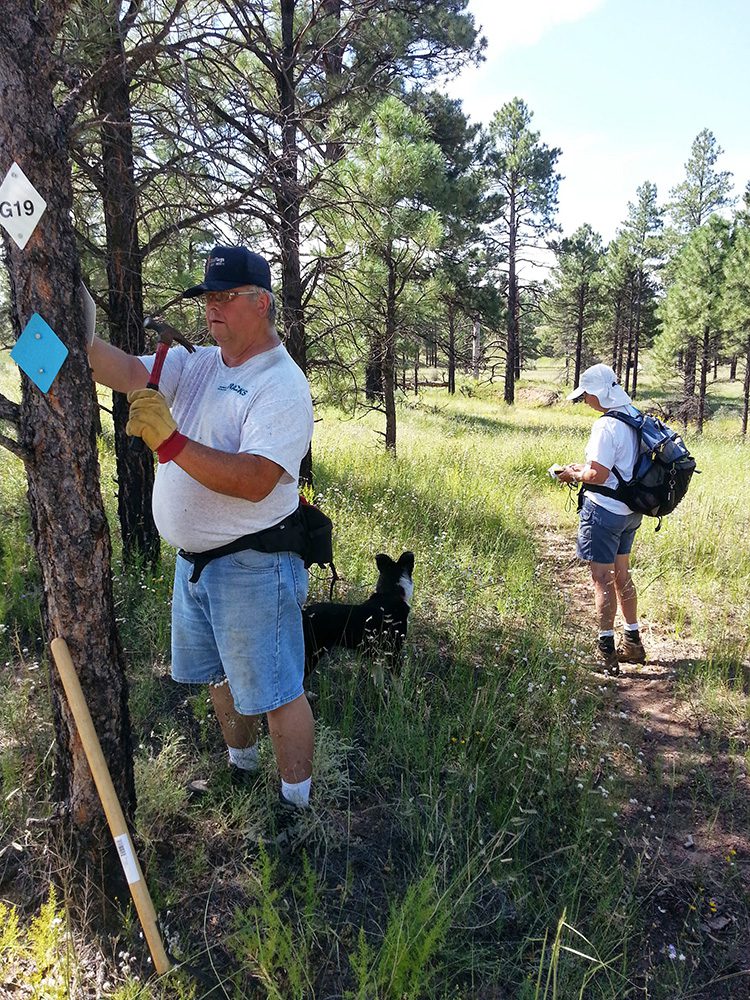In 1987, at the first meeting of what was to become the White Mountains Horsemen’s Association, 25 equestrians discussed the closing of an increasing number of long-term riding areas and decided that an organization was needed to preserve non-motorized trails for equestrians, hikers and mountain bikers. Thus, began the long process of growing a trail system and TRACKS, a volunteer organization dedicated to work with the USFS in planning, developing, and maintaining the White Mountain Trail System (WMTS).
The White Mountain Trail System is a series of multi-use, major-loop trails and connector trails in the Apache-Sitgreaves National Forests ranging from the community of Vernon on the east to the communities of Clay Springs and Linden on the west.
The WMTS includes urban trails in the town of Pinetop-Lakeside, the city of Show Low, and the Wagon Wheel area. The multi-use trails are cleverly designed to take maximum advantage of regional beauty and vistas, with extreme care given to preserving the land, vegetation, wildlife, and wildlife habitats. Landscaped urban trails have multiple entrance points to ease access by residents and visitors.
The unique feature of the WMTS is the loop trail. Most trails traditionally go from point A to point B, requiring a return trip over the same terrain. The WMTS loop goes from Point A and returns to A. Loop trails are joined by connector trails making longer traverses possible. Loops vary in size allowing a pleasant evening’s walk, a day hike with a stop at selected picnic type areas, a several-day horseback trail ride, an adventurous backpack trip, or a scenic mountain bike tour. Winter transforms selected trails to cross-country ski trails.


